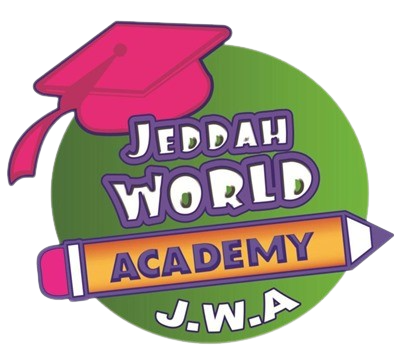The first grade is the first school year in Elementary school after Kindergarten. Children who are usually 6 to 7 years old are enrolled for this grade.
During their time in the first grade, children are taught the basic fundamentals of Math. Basic geometry along with graphing may also be introduced. Additionally, first graders are taught basic reading skills with the focus on reading and writing simple statements. Of course, with the changes brought about by the Common Core Standards, children entering the first grade are now expected to read and understand stories covering a wide range of lengths and difficulty.
Grade 1
Students are also introduced to the basics of Social Studies, Geography and Science. The subject of Science is taught to them in an interactive manner that enables free questioning and comprehensive understanding of the world around them.
Akademiat Aalam Jeddah offers the hallmark of truly effective traditional education programs.
Grade 1 English Curriculum Language Arts
Following the Common Core Standards for 1st grade English, this class builds on the reading, writing, speaking, and listing skills for students. Students will practice retelling stories, answering questions about stories, and describing the major events within a story.
Students will develop skills to identify words that suggest feelings, explain the differences between books that tell stories and those that give information, and identify who is telling a story at different times in a book. The students will demonstrate an understanding of words that are spoke, syllables within a word, and sounds. Through the application of appropriate phonics and the analysis of words, students will be able to read grade-level material well enough to understand the meaning.
By the end of the academic year students should be able to write opinion, informative, or narrative works. They should also feel comfortable conducting collaborative writing projects that involve some research.
Grade-1 Mathematics Course Outline
This course is aligned with the Common Core Standards for 1st grade mathematics.
The course focuses on 4 critical areas.
First, the students will work to understand addition and subtraction, and be able to perform addition and subtraction within 20. They will work with addition and subtraction equations and understand the relationship between addition and subtraction.
Second, the students will begin to understand how numbers relate to each other, including grouping in tens and ones.
Third, the students will develop an understanding of linear measurements and length units. They will also learn how to tell and write time.
Fourth, the students will begin to understand the attributes of shapes and how to create them. They will understand how to put some shapes together to create a new shape, or how to recognize shapes at different orientations.
Grade-1 Science Course Outline
The students are provided an overview of many different types and aspect of science, including scientific inquiry, biology, physical science, and geology. The students will practice using their five senses to make observations of the world around, the basis of science. The students learn the difference between living and nonliving things based off of their properties. Plants are discussed, including different types of plants, their parts, and how they develop. Next, the students learn about animals, what they eat, where they live, and how they are different from plants. The students study the functions of the organs in their body, including the brain, heart, lungs, skeleton, skin, and stomach. Students explore the Earth, from the inside out, and study how the Earth changes through weathering, erosion, and earthquakes. Students will learn why day and night occur, and will learn about constellations in the night sky. The students will learn about what is matter, how to describe its properties, and the three states of matter.
Grade-1 Social Studies Course Outline
This course continues to build on the big ideas taught in kindergarten social studies, and brings new ideas forward as well, most in the context of a family. First, the students learn more about families, how they can be similar and how they can be different. The students also learn about how families interact and the rules families follow. The students then hear about how learning happens, both at school and at home. Next the students learn about how both children and parents work, where they work, and how money is used in our culture. The differences between a want and a need is explained, along with how people get what they want and how needs and wants have changed over time. The students will learn about our natural resources and how we must take care of our resources in order to keep them around.
Is Your
Child Falling Behind?
Children with special needs tend to require more personalized attention. Having to study in a classroom full of children and cope with the pace that is set for the entire class can sometimes be overwhelming for them. In such cases, children sometimes tend to shut down, which in turn hampers their learning process.
This can have detrimental effects on a child’s overall educational development, especially given the formative nature of elementary school learning. To help such children overcome their problems, Akademiat Aalam Jeddah has implemented a Prescriptive/Adaptive learning Program. This program focuses on a child’s weaknesses and helps them overcome challenges.
This self-paced learning system is designed to improve student achievement and combines modern technology with the academic standards to deliver high quality education according to the standards set by the No Child Left Behind Act. With a view to preparing children for academic challenges, this system is ideal for at-risk or learning-disabled children.



